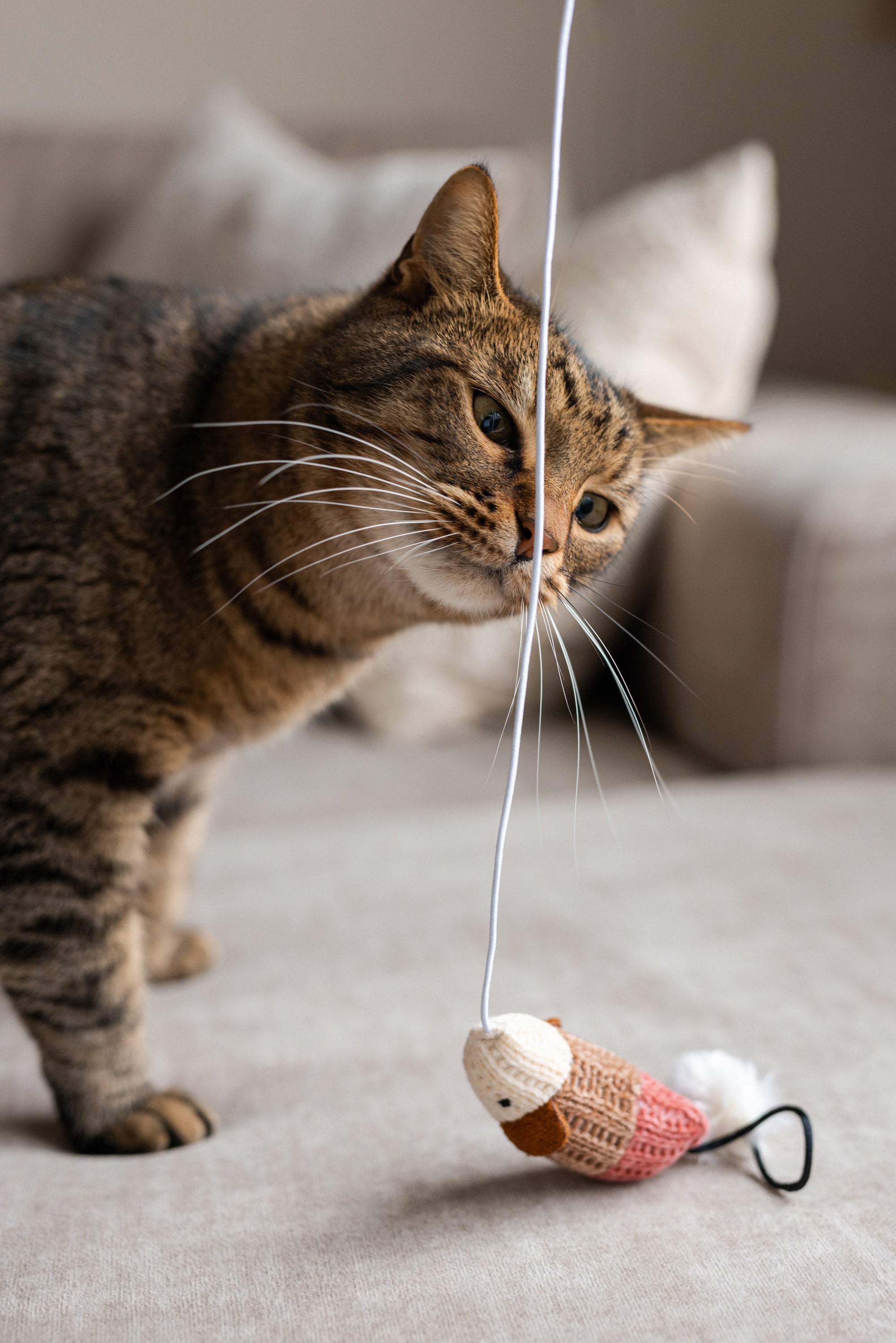
Why Do Some Cats Destroy Their Toys? Understanding Feline Play Styles
It’s no secret that some cats play more intensely than others. If you’ve ever wondered why your feline friend seems to shred every toy like it’s an audition for “Claws: The Musical,” you’re not alone! Below are some likely reasons behind that fierce playstyle, plus tips for keeping your cat happy without emptying your bank account on constant replacements.
1. Instinctual Urges: Feline Hunting 101
Cats are natural hunters. Even when they’re lounging around like tiny royalty, their instincts drive them to chase, pounce, and claw. Some felines take this to the next level by delivering powerful bites and scratches (as if they’re starring in their own kitty action movie). If your cat behaves like a mini lion on the prowl, you’ll need a toy that won’t wave the white flag too soon.
Tip: Seek out toys with strong materials, like solid wood, thick yarn, or reinforced stitching, so they can handle repeated “attacks” without looking like they survived a cat-apocalypse.
2. High Energy Breeds or Personalities
Some kitties have enough energy to power a small city—Bengals, for example, or that one playful tabby who never seems to take a catnap. These energetic furballs will put any toy through its paces in record time. If the toy is made of flimsy plastic or a thread-thin string, chances are it’ll be chewed to bits before your cat finishes its victory lap.
Tip: Go for “super-strong” designs specifically made for rough play. Not only will they stand up to your cat’s over-the-top enthusiasm, but they’ll also keep Kitty interested with interactive features—think dangling mouse that’s harder to catch than a laser pointer.
3. Stress Relief and Boredom
Aggressive play isn’t always about your cat acting like a little destroyer for fun; sometimes it’s a reaction to boredom or stress. Cats that feel cooped up or under-stimulated will find creative ways to let off steam (good luck, furniture). Give them a more appropriate outlet, and watch that “The Sofa is My Scratching Post” phase fade away.
Tip: Schedule regular play sessions to help your cat release energy in a positive way. Toys made of multiple textures, such as wood and yarn, keep them engaged longer, like a feline form of Netflix bingeing.
4. Engaging the Senses
The more senses you can activate, the more determined your cat will be to show that toy who’s boss. Rattles, various textures, or a sprinkle of catnip can all amplify the fun. Of course, with great excitement comes great wear and tear, so you’ll need something built tougher than your cat’s attitude at dinnertime.
Tip: Choose toys that don’t quickly fall apart or become a choking hazard after a few intense rounds of “kitty karate.” Regularly check for loose threads or broken parts for maximum safety.
5. Keeping Them Happy
A cat that goes through toy after toy is usually both super energetic and very curious. Think of it as living with a fuzzy Sherlock Holmes who’s testing every possible way to dismantle a suspect. By choosing toys designed for stronger chewers or enthusiastic scratchers (like the Super Strong Stick), you can keep your cat active and entertained without constantly stocking up on replacements.
Tip: Rotate your cat’s toys every few days. It’s like bringing out “new” toys from the secret vault each week, which keeps boredom at bay and protects your wallet from crying out for mercy.
Final Thoughts
Cats with strong play drives aren’t “bad”; they’re just following their instincts while auditioning for “Most Dramatic Toy Takedown.” With the right gear and a dash of planning, you can satisfy your cat’s natural hunting urges and protect your home from endless toy carnage. By investing in durable, well-crafted toys like our Super Strong Stick, you’ll keep your fluffy ninja happily engaged (and your wallet far happier, too).


